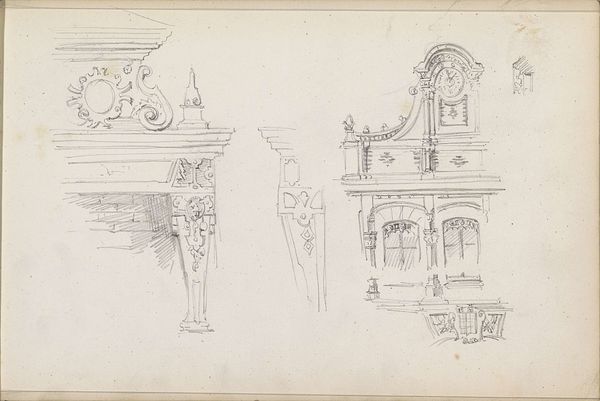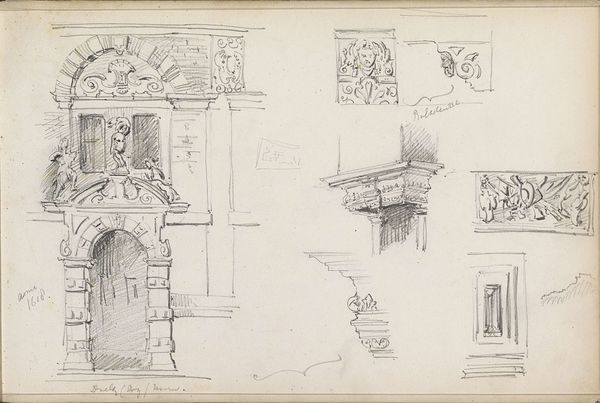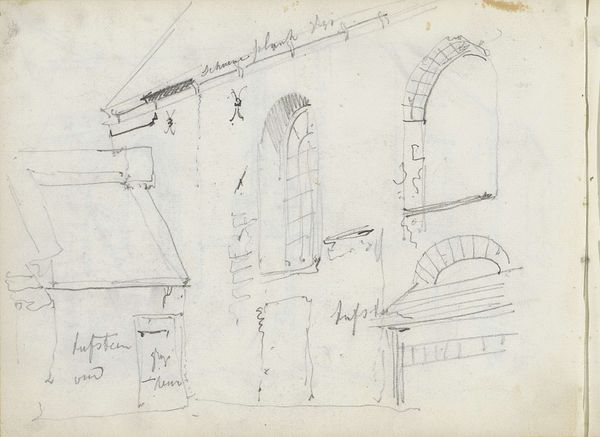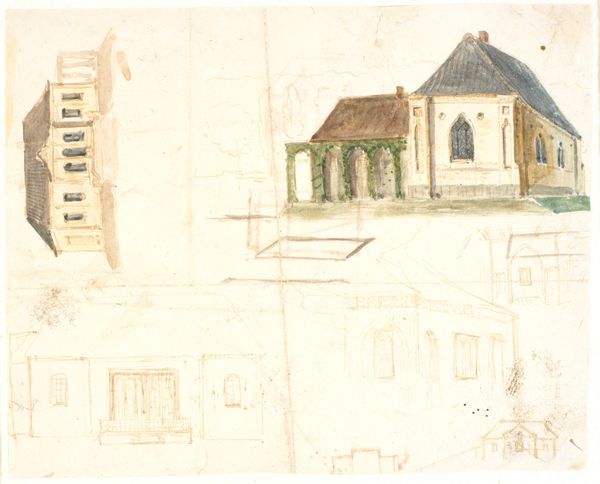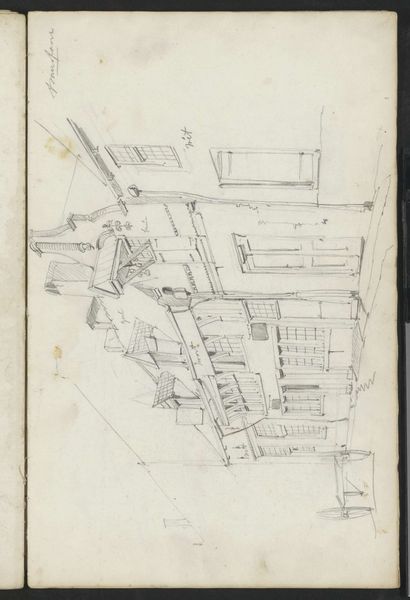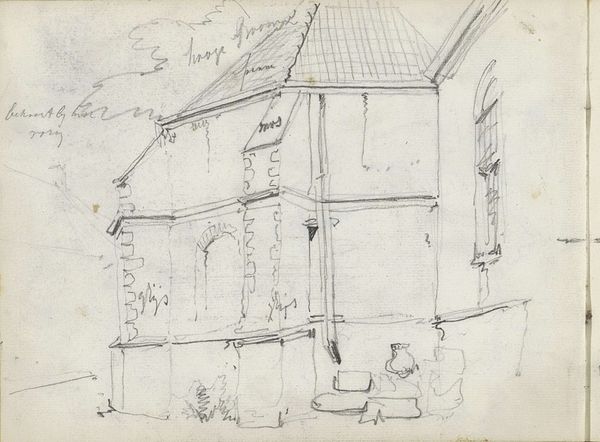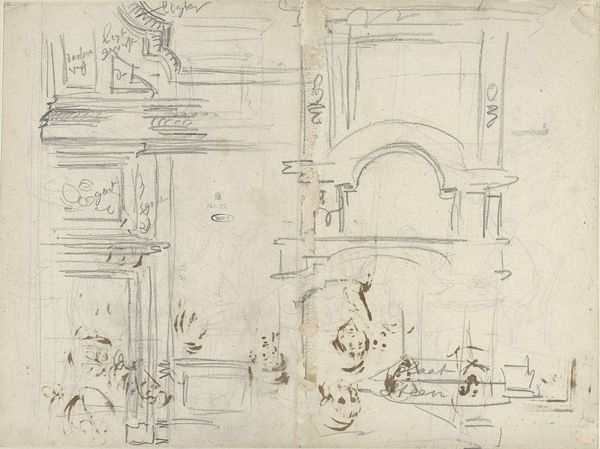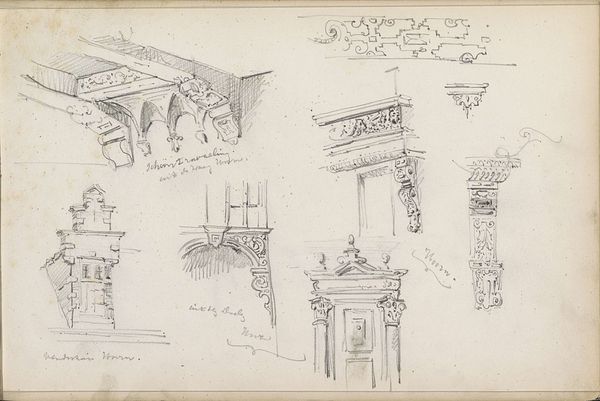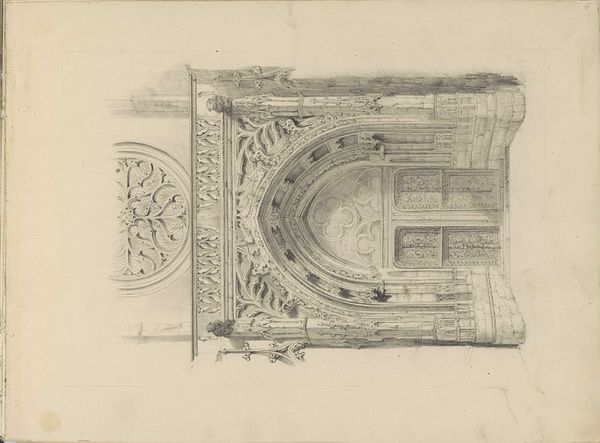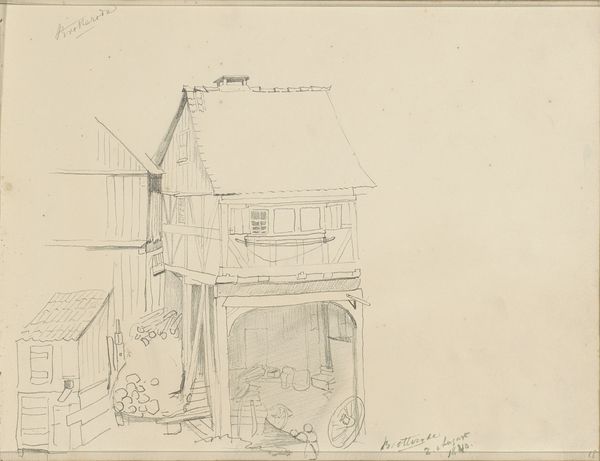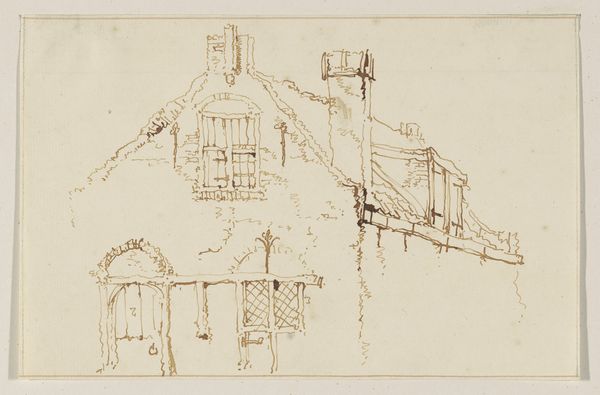
#
architectural sketch
#
aged paper
#
toned paper
#
quirky sketch
#
sketch book
#
personal sketchbook
#
sketchwork
#
pen-ink sketch
#
sketchbook drawing
#
sketchbook art
Copyright: Rijks Museum: Open Domain
Curator: Well, first blush, this drawing feels quiet, intimate. Like a glimpse into a secret world only the artist was privy to. It's…gentle, somehow. Editor: This is a study, isn’t it? Isaac Gosschalk’s “Dakkapel in de Vijzelstraat te Amsterdam,” dating back to 1863. It offers insight into the practical realities of architectural draftsmanship during the period. Notice the pencil and ink work on what seems to be aged, possibly toned paper, likely pulled straight from a sketchbook. Curator: Oh, a study. I get it, looking closer. You can almost smell the aged paper, can't you? I’m immediately drawn to that dormer window – it’s framed so ornately, compared to the rough sketch of the roof tiles all around it. There's such a stark contrast. Editor: Absolutely. We see here a fusion of craft and fine art – the dormer, clearly requiring specialized labor and precise execution of ornamental stone, juxtaposed against the functional, mass-produced tiles. Think about the social stratification implied here – who gets the decorative flourishes? Where does the labor come from to realize such detailing? Curator: Hmm, yes, the craftsmanship *is* exquisite. I was seeing more of the pure beauty of form. Maybe I was reacting to the implied narratives – a story of the occupants, perhaps? What views did they capture looking out through that window? It feels full of possibility and quiet observation somehow. Editor: And what about the labor needed to create such views? The extraction, transportation, and crafting of materials, from stone to glass? And consider the urban planning and the street layout – all shaping the very possibility of this "view." The materiality speaks to the socio-economic structures of the time. Curator: I do love the loose, unfinished quality, as it lets my imagination fill in the gaps. It pulls me in. It invites me to create my own narrative, layered upon whatever history you describe with your material analysis. It feels like collaboration, in a way, between me and the artist, across time. Editor: Precisely. The sketch's open-endedness serves as a reflection of how history and personal experience converge, as mediated through art and the structures that underpin even seemingly individual creative expressions. So, it really comes down to understanding art's intersectional relationships between artistic skill, material culture, and societal forces. Curator: Ultimately for me, the real magic lies within that initial spontaneous feeling a work of art provokes – a gut feeling of wonder that can, ideally, push you to question, feel, and want to know more. Thank you for prompting my own critical perspective here. Editor: Thank you, too, for grounding me again to a deeper human sensibility – one inextricably linked with material conditions, and constantly shifting and changing our interpretations through time and place.
Comments
No comments
Be the first to comment and join the conversation on the ultimate creative platform.

